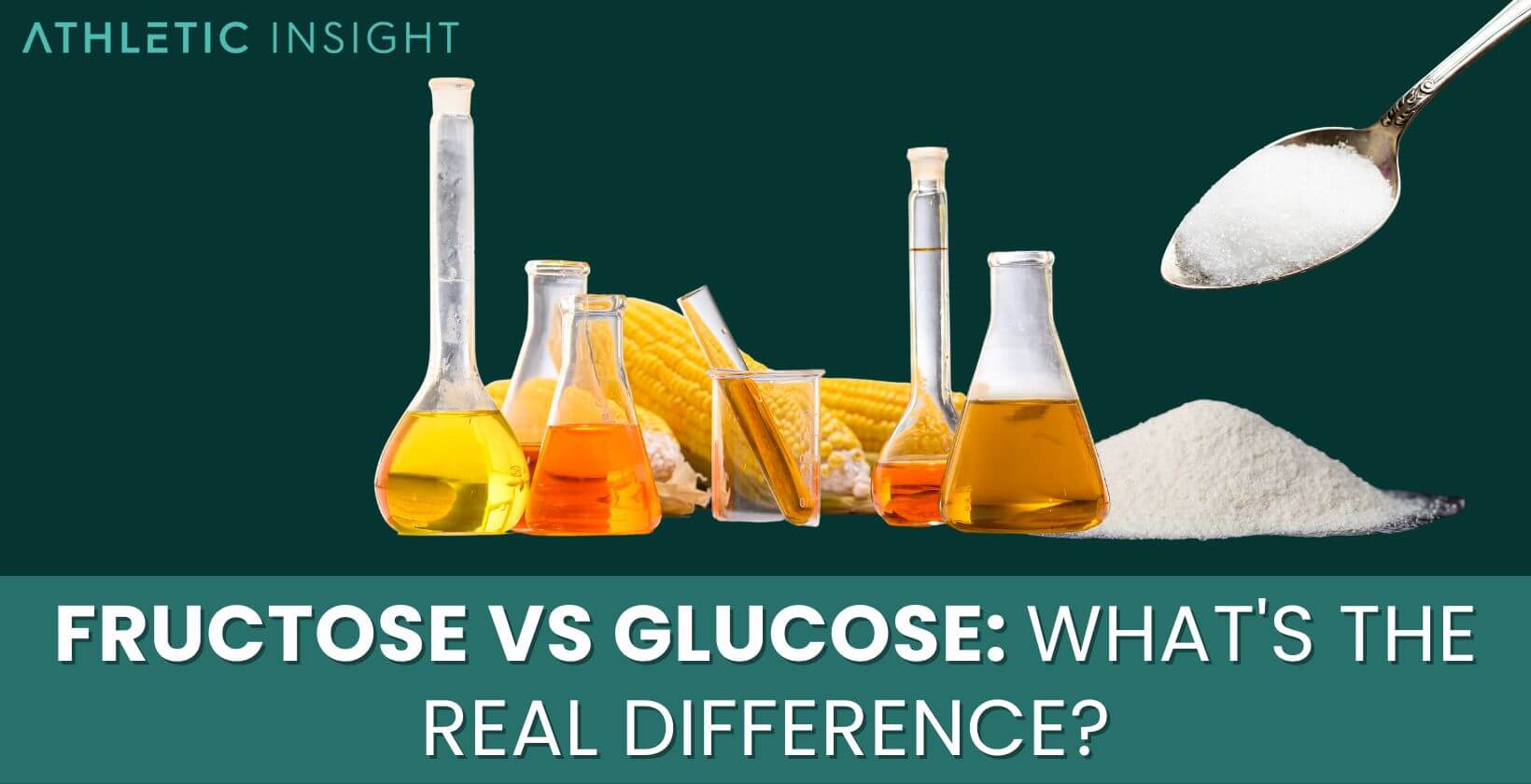Imagine standing at the aisle in a grocery store, puzzled between fructose and glucose. Which one is healthier? Why do they show up in so many food products? In this detailed guide on fructose vs glucose, the difference between these two sugars will be explored. From their chemical structure to how they impact your health, you’ll learn how to make informed dietary choices.
What are the differences and similarities between fructose and glucose?
When it comes to the basic distinction, both fructose and glucose are simple monosaccharide sugars; however, a closer look reveals quite a few contrasts and parallels. Their similarities lie in their common role as forms of sugar capable of providing energy to the body. Both also regulate appetite by interacting with specific hormones like ghrelin and GLP-1.
As for the differences, it boils down to their chemical structures. Glucose is a hexose sugar, and fructose, often found in fruits and honey, is a pentose sugar. This structural dissimilarity subsequently leads to varied impacts on the body.
While starch and sugar, such as sucrose or high-fructose corn syrup, yield glucose in large amounts when digested, other sources like fruits and vegetables are rich in fructose. The sources and impacts of these two sugars, hence, influence our food choice.
How does the body process fructose and glucose sugars?
When considering the digestion of fructose and glucose, they are processed differently by your body. Glucose is directly absorbed into the bloodstream during digestion and triggers insulin release, which helps regulate blood sugar levels. On the contrary, the majority of fructose gets metabolized in the liver, where it is converted into glucose or glycogen for energy.
Taking an in-depth look into the metabolism of fructose vs glucose exposes a slight variation in how the body uses these sugars. Besides, it highlights the central role of the liver in processing both these sugars and converting them into usable energy. Significant disproportion in fructose or glucose intake can frequently lead to metabolic complications, enhancing the importance of understanding their differences better.
What are the effects of fructose or glucose on health and nutrition?
While both fructose and glucose might seem innocent as simple sugars, their impacts on the body vary drastically. Glucose’s primary role in the body is to provide energy. But consuming it in large amounts can spike blood sugar levels, which can potentially lead to health issues such as weight gain and diabetes.
On the other hand, fructose may have less of an immediate impact on blood sugar and insulin release compared to glucose. However, if consumed excessively, it could potentially contribute to liver damage, obesity, metabolic syndrome and high blood pressure. This study offers more insight into their overall effect on the body.
Regular intake of both fructose and glucose can alter their effects on the body. Too much glucose may result in a quick energy spike followed by a crash, while chronic overconsumption of fructose could lead to more serious health issues in the long run. It’s essential to maintain balance and moderation in your diet to keep these sugars from negatively impacting your health.
Can fructose or glucose sugars influence appetite regulation?
Yes, fructose and glucose can have an impact on appetite regulation. Both sugars are associated with hormone alterations that can influence feelings of hunger and fullness. According to research, they can cause a lowering in ghrelin, the hunger hormone, and an increase in GLP-1, a hormone that signals satisfaction.

Diving deeper, let’s explore the hormones involved. Ghrelin is a hormone that is produced and released mainly by the stomach with small amounts also released by the small intestine, pancreas and brain. In contrast, GLP-1, or glucagon-like peptide-1, is an incretin hormone, a kind of hormone that reduces blood sugar levels.
When we consume foods high in fructose or glucose, they stimulate the production of GLP-1, thereby promoting feelings of fullness. At the same time, they suppress ghrelin, reducing feelings of hunger. This dual action can aid in appetite regulation, helping to avoid overeating.
The function of cholecystokinin, another hormone involved in signaling fullness, can also be altered by these sugars. However, there’s still much to learn about the detailed mechanics of how fructose and glucose interact with our hormone levels and the precise effect they have on our sense of hunger and fullness. Notwithstanding these unknowns, it’s clear that these sugars do play a role in appetite regulation, serving as key pieces in the complex puzzle of our body’s satiety control.
Are There Benefits and Drawbacks to Consuming Fructose or Glucose?
Fructose and glucose, while both are simple monosaccharide sugars, have distinctly different influences on the body. Consuming fructose, found in fruits or honey, for example, has been linked to improved diabetes management, due to its lower glycemic index. On the flip side, overconsumption can strain the liver and increase triglyceride levels, a type of fat in your blood, contributing to heart diseases.
Shift your focus to glucose; it’s the body’s preferred energy source, especially for your brain and muscles during workouts. However, constantly having high glucose levels can lead to obesity, heart diseases and pre-diabetes.
Each type of sugar has its benefits and potential drawbacks, which can largely be avoided with moderate and mindful consumption. These sugars clearly impact more than your sweet tooth! Remember, balance is key in diet, as in life.
How much fructose and glucose is too much?
Determining “how much is too much” for fructose and glucose can be complex because it depends on individual health, lifestyle, and dietary needs. However, general guidelines and concerns exist regarding the consumption of these sugars.
Consuming fructose in natural forms like fruits and vegetables is generally healthy due to accompanying fiber and nutrients. However, health risks arise from excessive intake of added sugars, like high-fructose corn syrup in processed foods, linked to obesity, diabetes, and liver disease. The American Heart Association recommends limiting added sugars to 6 teaspoons per day for women and 9 for men, encompassing all sources of added sugars.
Glucose, a vital energy source, is found in carbohydrates such as grains, fruits, and sweeteners. Excessive consumption of glucose, especially from refined carbs and sugary foods, can lead to weight gain and increase the risk of diabetes and heart diseases. It’s important to focus on complex carbohydrates and maintain a balanced diet for healthy glucose intake.



